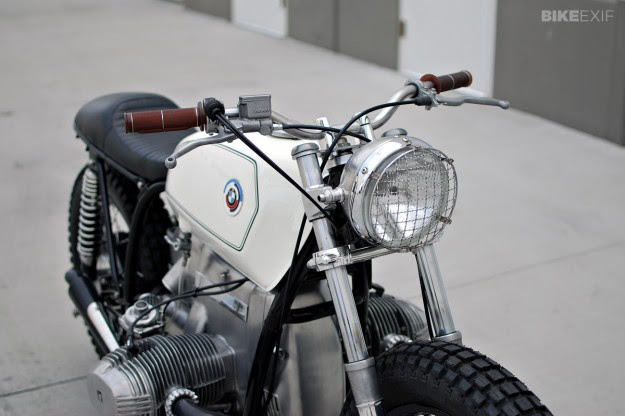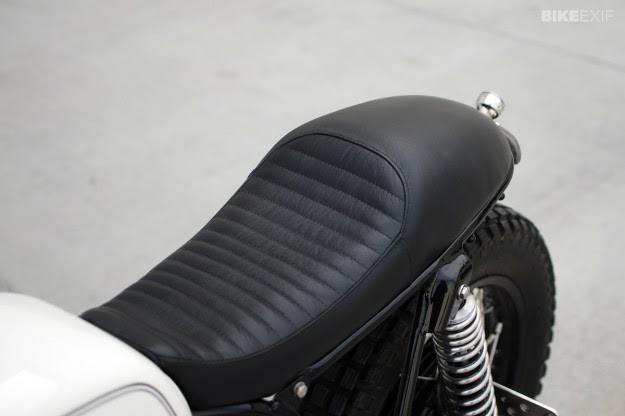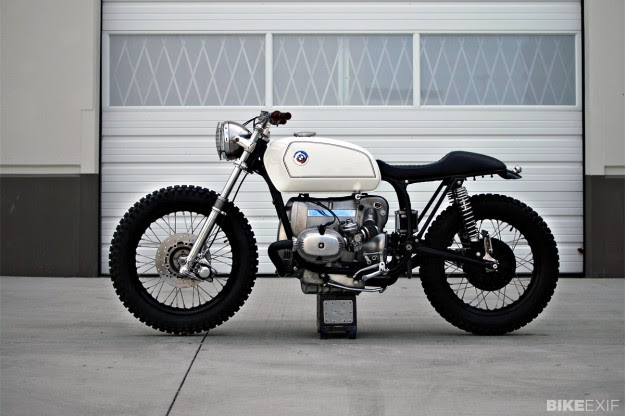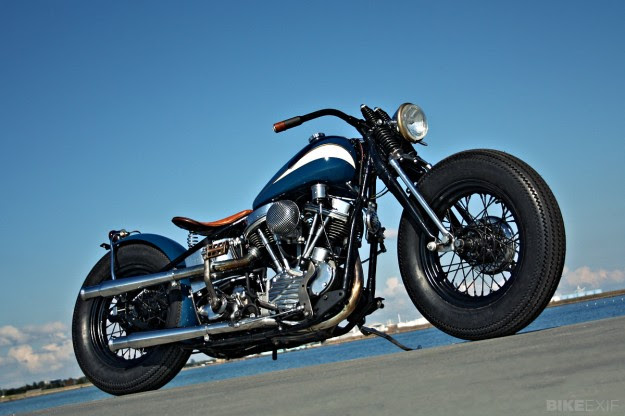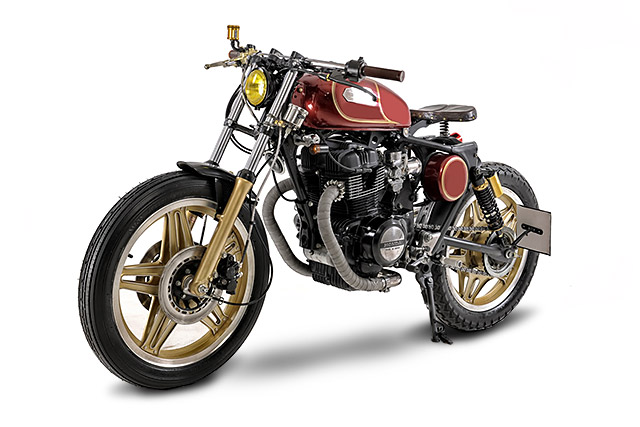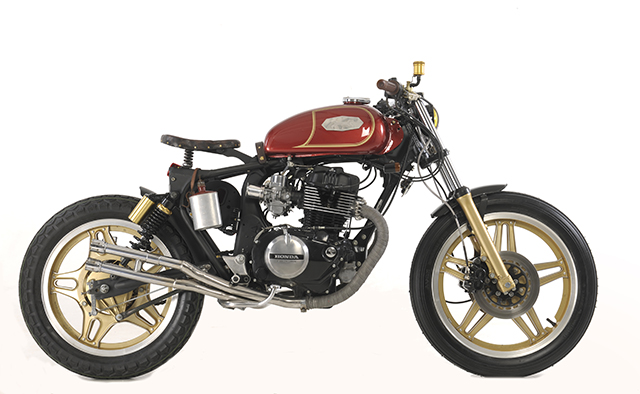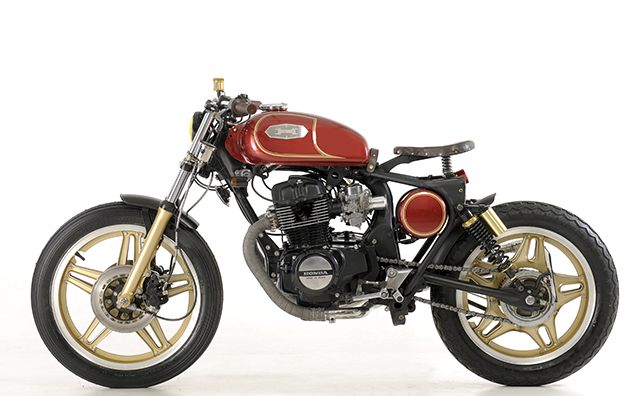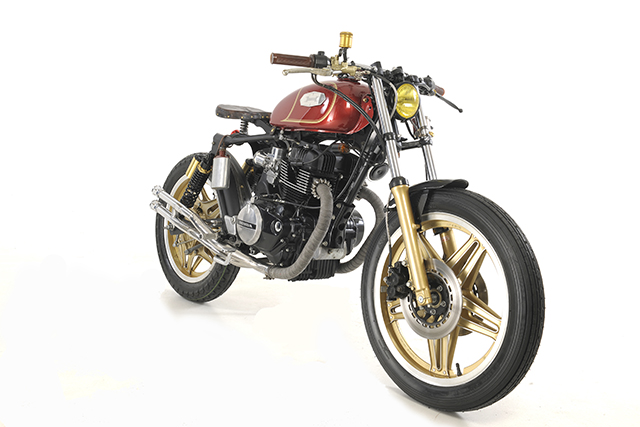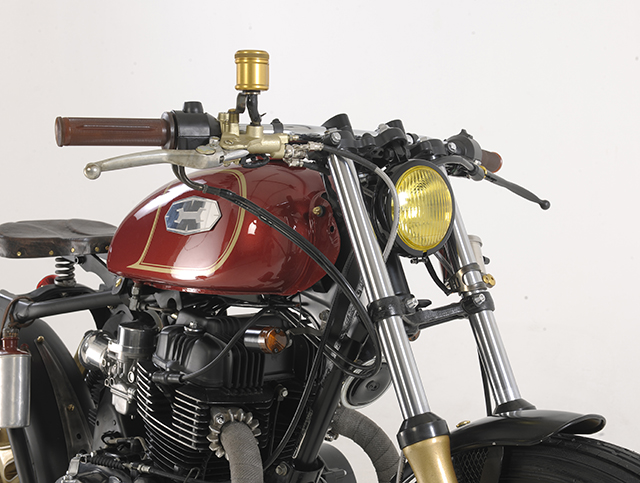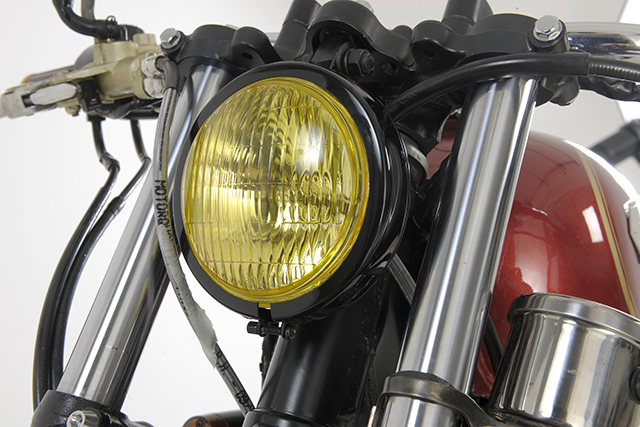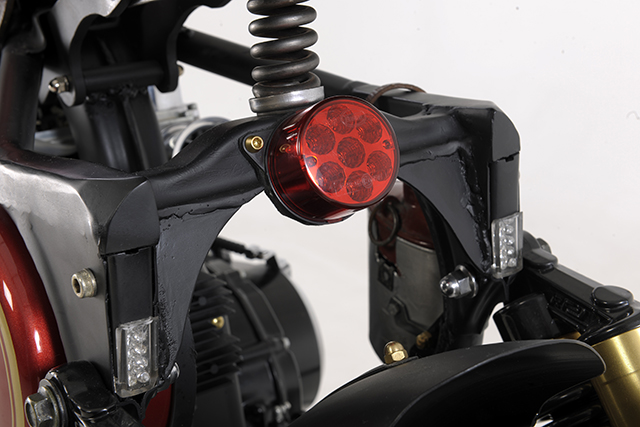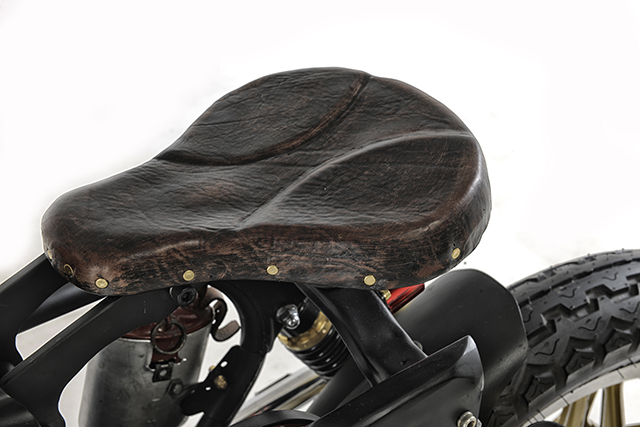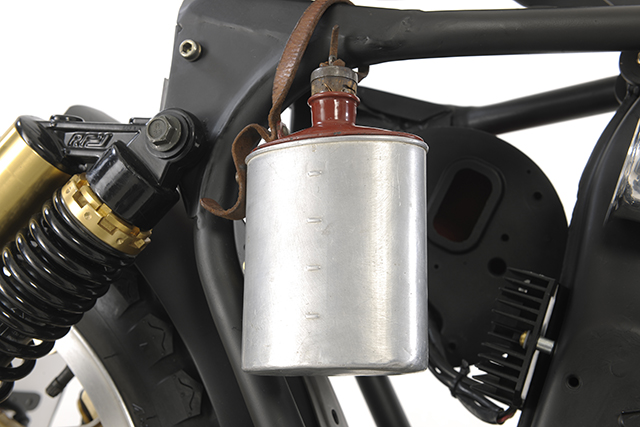
I have to admit that I’m immune to the charms of modern-day motocross bikes. I have a soft spot for the old Husky 400s and Honda Elsinores, but the garish, logo-emblazoned machines of today leave me cold.
There’s no question about their performance, though. And there’s something magical about riding a bike that weighs less than 250 pounds. So I like the idea of taking a dirtbike, stripping off the plastic and stickers, and turning it into a classy roadburner.

I’m guessing Joey Subrizi was thinking along the same lines when he built this amazing Yamaha YZF 426-based custom. The early 2000s YZF was a perky four-stroke single with nondescript styling, but had around 45 hp pushing only 230 lbs around. So Joey has kept the bike’s strengths but given it an amazing dose of style.
The frame is all-new from the tank backwards. And that tank is an inspired choice: It’s from a 1976 Yamaha XS360, and matched to a tiny, waspish tail unit. The frame, swingarm and part of the tank have been powdercoated in shades of grey and black, with gold trim providing subtle highlights.

Joey works for Öhlins USA, so there’s a trick gold shock out back. The original swingarm linkage is gone, and the shock is now a direct mount—“I don’t need eight inches of travel,” Joey notes.
The forks have been lowered a little from the typical skyscraper heights of motocross bikes, and compact raw metal guards add a touch of steampunk—along with the peak over the headlight. The engine is now blacked-out, and the brightest element of the whole bike is the hand-made exhaust system.

So it looks sharp, goes fast, and doesn’t cost a bomb to run. What’s not to like?
Images © Frank Bott. Check out his website and Facebook page for more fine motorcycle photography.

The post Joey Subrizi’s roadgoing YZF 426 appeared first on Bike EXIF.












